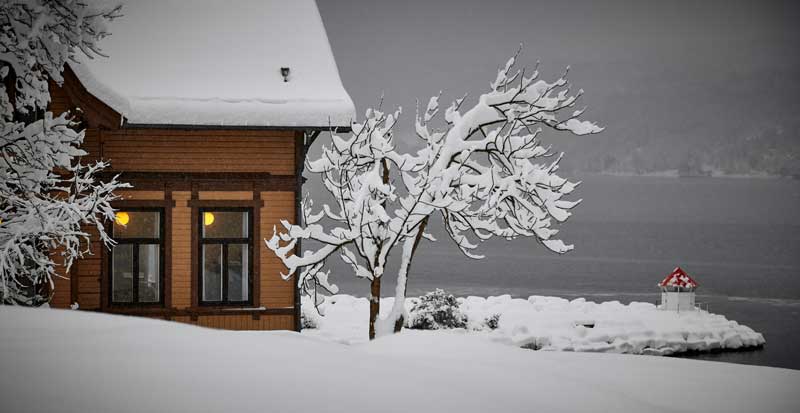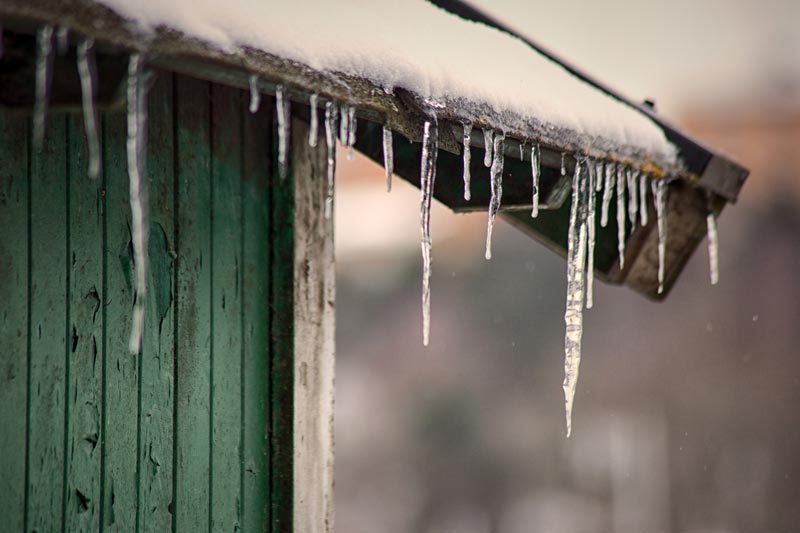- Free Estimates

Some rooftops have icy accumulations along their edges. You can and should deal with what’s causing the ice dam in the first place, but you also need to get rid of the existing dam before it causes any more damage. Otherwise, it could cause the roof to deteriorate and increase the likelihood of a roof leak.
The longer ice dams remain, the greater the danger that could potentially occur. On the other hand, you need to be cautious about the approach you use to remove the ice dam, as this could lead to structural damage to the roof. Roofing contractors in Fairfield, CT, share tips on removing ice dams from your roof and preventing them from coming back.
When ice accumulates under the eaves of your roof, it forms an ice dam that prevents melting snow from draining down. When warm air from your house rises to the attic, it warms the attic and the interior roof deck, which melts snow and ice on the external roof deck, causing a dam to form. Since the surface temperature is lower at the eaves and gutters, the melted water flows down the roof. It refreezes there, creating an ice dam and icicles.
When an ice dam forms, melting snow or rain is trapped on the roof instead of draining away. If the roof has no gutters, water will seep under the shingles and eventually make its way into the attic and house itself. An ice dam is one of the most common roofing issues that roofing contractors in Fairfield, CT, face during winter.
When you try to remove ice dams by pounding on them with a chisel, hammer, or shovel, you risk damaging your roof and putting yourself in harm’s path. And pouring salt on them will cause more harm to your roof than on the ice. While waiting for warm weather, roofing contractors in Fairfield, CT, recommend these DIY methods to remove ice dams from your roof:
Bring a box fan up into the attic with you and point it at the underside of the roof, where water is leaking in actively. This concentrated blast of cold air will stop the water in its tracks and freeze it solid.
Using a long aluminum roof rake handle, you may safely remove snow from the roof’s surface without risking your balance by standing on the roof. You may immediately regulate the roof’s external temperature without risking damage to the shingles using a tool like a wheeled rake.
After a dam has developed, the damage might be minimized using pantyhose and calcium chloride. Put some calcium chloride ice melter inside the discarded pant leg. Spread the hose on the roof so that it reaches across the ice dam and hangs over the gutter. Push it into place with your hands, or use a long-handled stick. Over time, the calcium chloride will melt the snow and ice, allowing water to flow into the gutters and off the roof.

All of these strategies for removing ice dams are only temporary. In the near term, they can assist keep your roof from becoming damaged, but they won’t prevent another ice dam from the building. The only way to permanently fix ice dams is to have your roofers deal with the underlying problem that’s causing them. Poorly maintained gutters are often blamed as the source of the problem, although this is rarely the case. Most commonly, inadequate attic insulation is the root cause.
Ice dams are an indication that there is something else wrong with your roof. In most cases, addressing these issues will not eliminate the ice dam, but fixing them may lessen their impact on your roof. Furthermore, they contribute to the overall health of your roofing system. These possible contributing elements include:
Most plumbing vents come out on the top of the roof. But ventilation for other household systems shouldn’t end at the roof. Doing so could cause an ice dam to form as the melted water refreezes and builds up against the surrounding snow. You could alternatively run vents through an exterior wall.
Ice dams can sometimes form because of how roofs are designed. For instance, an ice dam may form if water from a warm higher roof plane flows down onto a colder lower roof plane. If you have a problem with your roof, roofing contractors in Fairfield, CT, can tell you if the design is to blame and what you can do about it.
Slowly draining and clogged gutters can lead to ice dams. However, they are rarely the primary cause. Maintaining clean gutters crucial for avoiding this issue.
Consult with a reliable roofing contractor in Fairfield, CT, to find out what roofing insulation you have and if it requires replacement with a better attic insulation option. If your home is properly insulated, the heat generated inside won’t be transferred to the roof. This means that the snow on the shingles is less likely to melt and more unlikely to refreeze and cause an ice blockage.
Call the Roofing Contractor of Fairfield for a thorough roof inspection and maintenance. They will ensure that your home will be ice dam-free during the snowy season.